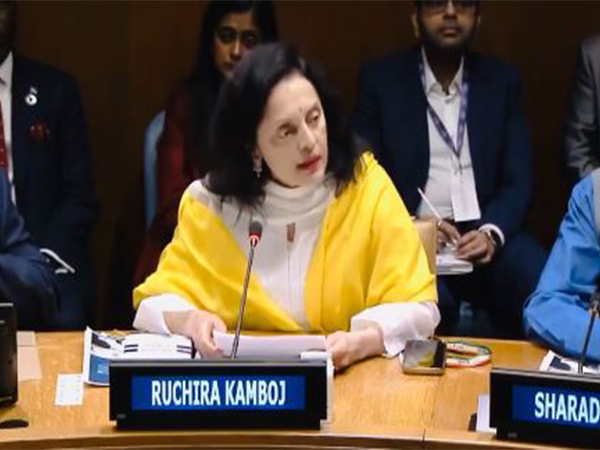Highlighting India’s digital public infrastructure, Permanent Representative to the United Nations, Ruchira Kamboj, on Thursday said that India has achieved an 80 per cent financial inclusion rate within six years, a feat that would have taken decades without such digital infrastructure.
Addressing a session at the United Nations Security Council on Thursday, Kamboj said that India’s journey offers powerful lessons for other nations embarking on digital transformations.
“Within six years, India has achieved an 80 per cent financial inclusion rate, a feat that would have taken decades without such digital infrastructure,” she said.
“As we gather here today to celebrate the empowerment of billions in India, we remind ourselves of the words of Secretary-General Antonio Guterres that partnerships must continue to be at the heart of our strategy and embracing the spirit of our G20 leadership “Sabka Saat Sabka Vikas,” together for everyone’s growth,” Kamboj added.
She further underscored that the International Monetary Fund (IMF) has noted in its working paper the benefits of India’s digital journey.
“India’s journey offers powerful lessons for other nations embarking on digital transformations, emphasising a design approach focused on shared building blocks to spur innovation across ecosystems,” Kamboj said.
She further shared the story of a woman named Geeta, a mother of two and a tailor from a small town in India, Khurja, Uttar Pradesh.
“She never had the chance to attend university. Every day she stitches clothes for her neighbours, earning her wage in crumpled bills of tens and hundreds. With every stitch, she weaves her dreams not just for herself but for her children, ensuring that they receive the education that she missed,” Kamboj said.
She continued Geeta’s routine included a monthly trip to the city bank, trading a day’s earnings for a bus ride to deposit her hard-earned savings. She dreamed of saving enough to expand her small tailoring business into something much bigger and she aspired to be a businesswoman.
“One day in 2016, a change sparked when a customer asked if she would accept payment via India’s United Payments interface or the UPI. Unfamiliar, but intrigued, Geeta decided it was time to learn something new,” Kamboj said.
She found a tutorial video by the Press Information Bureau, produced by the Indian government and what she discovered was nothing short of a revolution, Kamboj added.
Emphasising that Geeta opened up a world where she could connect with customers, not just in her locality, but across the country, Kamoj added that, today, Geeta doesn’t make those trips to the bank anymore.
“Instead, she spends that time at a children’s school, watching them learn and grow, secure in the knowledge that their future is bright. Payments for her tailored clothes now come instantly to her phone from all over India. She saves for her business and pays for her children’s tuition, all through a digital wallet on her mobile,” she said.
Kamboj further stressed that now, Geeta has become what she always wanted to be, a successful businesswoman empowered by the digital age.
Now this transformation was made possible by the India stack, a pioneering force in building digital public infrastructure, turning a billion dreams like Geeta’s into reality, Kamboj emphasised.
“It has revolutionised everyday transactions in India, from buying vegetables to consuming street food like the famous Indian panipuri. From taking loans to saving money,” she added.
Kamboj further stressed, “Let’s inspire and be inspired as we work together to build a digitally empowered world.”-ANI



